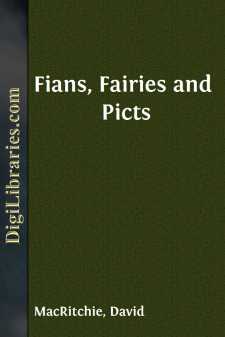Categories
- Antiques & Collectibles 13
- Architecture 36
- Art 48
- Bibles 22
- Biography & Autobiography 813
- Body, Mind & Spirit 142
- Business & Economics 28
- Children's Books 15
- Children's Fiction 12
- Computers 4
- Cooking 94
- Crafts & Hobbies 4
- Drama 346
- Education 46
- Family & Relationships 57
- Fiction 11828
- Games 19
- Gardening 17
- Health & Fitness 34
- History 1377
- House & Home 1
- Humor 147
- Juvenile Fiction 1873
- Juvenile Nonfiction 202
- Language Arts & Disciplines 88
- Law 16
- Literary Collections 686
- Literary Criticism 179
- Mathematics 13
- Medical 41
- Music 40
- Nature 179
- Non-Classifiable 1768
- Performing Arts 7
- Periodicals 1453
- Philosophy 64
- Photography 2
- Poetry 896
- Political Science 203
- Psychology 42
- Reference 154
- Religion 513
- Science 126
- Self-Help 84
- Social Science 81
- Sports & Recreation 34
- Study Aids 3
- Technology & Engineering 59
- Transportation 23
- Travel 463
- True Crime 29
Fians, Fairies and Picts
by: David MacRitchie
Categories:
Description:
Excerpt
INTRODUCTION.
The following treatise is to some extent a re-statement and partly an amplification of a theory I have elsewhere advanced. But as that theory, although it has been advocated by several writers, especially during the past half-century, is not familiar to everybody, some remarks of an explanatory nature are necessary. And if this explanation assumes a narrative form, not without a tinge of autobiography, it is because this seems the most convenient way of stating the case.
It is now a dozen years or thereabouts since I first read the "Popular Tales of the West Highlands," by Mr. J.F. Campbell, otherwise known by his courtesy-title of "Campbell of Islay." Mr. Campbell was, as many people know, a Highland gentleman of good family, who devoted much of his time to collecting and studying the oral traditions of his own district and of many lands. His equipment as a student of West Highland folklore was unique. He had the necessary knowledge of Gaelic, the hereditary connection with the district which made him at home with the poorest peasant, and the sympathetic nature which proved a master-key in opening the storehouse of inherited belief. It is not likely that another Campbell of Islay will arise, and, indeed, in these days of decaying tradition, he would be born too late.
In reading his book, then, for the first time, what impressed me more than anything else in his pages were statements such as the following:—
"The ancient Gauls wore helmets which represented beasts. The enchanted king's sons, when they come home to their dwellings, put off cochal [a Gaelic word signifying], the husk, and become men; and when they go out they resume the cochal, and become animals of various kinds. May this not mean that they put on their armour? They marry a plurality of wives in many stories. In short, the enchanted warriors are, as I verily believe, nothing but real men, and their manners real manners, seen through a haze of centuries.... I do not mean that the tales date from any particular period, but that traces of all periods may be found in them—that various actors have played the same parts time out of mind, and that their manners and customs are all mixed together, and truly, though confusedly, represented—that giants and fairies and enchanted princes were men ... that tales are but garbled popular history, of a long journey through forests and wilds, inhabited by savages and wild beasts; of events that occurred on the way from east to west, in the year of grace, once upon a time" (I. cxv.-cxvi.). "The Highland giants were not so big but that their conquerors wore their clothes; they were not so strong that men could not beat them, even by wrestling. They were not quite savages; for though some lived in caves, others had houses and cattle and hoards of spoil" (I. xcix.). "And though I do not myself believe that fairies are ... I believe there once was a small race of people in these islands, who are remembered as fairies, for the fairy belief is not confined to the Highlanders of Scotland" (I....


